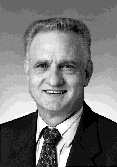STARDUST Status Report
October 17, 1997

Ken Atkins
STARDUST Project Manager
Welcome to the first Webpage Weekly Report. It is our hope to raise our STARDUST fans'
interest and involvement by communicating some of the exciting progress and events on the
project as we proceed toward our rendezvous with the Delta Rocket and blast-off toward Wild
2. Since this is the first report it is most appropriate to attempt initiating the reader at a start
point. So, let's begin a little review.
Hopefully, you already know STARDUST was selected competitively from a field of 28
proposals as the winner of the #4 position in NASA's Discovery Program. The Discovery
Program is NASA's series of relatively low-cost robotic missions aimed at doing planetary
exploration faster, better and cheaper. After selection, the project team entered an intensive
preliminary design phase (a.k.a. Phase B in the jargon). This period of about a year took us
from November 1995 to September 1996. At that time a Preliminary Design Review (PDR)
was held by NASA to validate the mission and spacecraft design maturity, match it with the
Discovery budget constraints and decide whether the project was ready to proceed to the
detail design and development phases (a.k.a. Phase C/D). We passed.
So for last year, from October 1996 to now, the team has been very busy completing
hardware designs for the spacecraft components, buying or building those components, and
also working on the software programs that will test it on the ground and operate it in flight. As
the hardware and software are built they are then integrated and tested to be sure they work
together as a team. So preliminary testing has been an important activity this year as well.
Some of the key elements include the Aerogel collector that will go into the Sample Return
Capsule to capture the comet and interstellar particles, the flight computers, the heat shields,
the spacecraft particle shields, the cameras, radios, solar power system, propulsion, and the
structures, mechanisms, and electronics that hook everything together. It's a pretty complex
task involving about 200 engineers at Lockheed-Martin's Astronautics Co. in Denver, some
35 engineers at JPL, and about 15 U.S. mission scientists scattered around the country at
universities and laboratories. That's not counting the Boeing Co. folks that are working to get
our launch rocket ready and the folks in Germany building one of the "passenger"
instruments, the Cometary and Interstellar Dust Analyzer (CIDA), described elsewhere on this
website in more detail.
At this point in the project, we have completed virtually all the design work, have passed the
so-called Critical Design Review (CDR) and are moving quickly toward the time when we begin
to assemble, integrate and test everything working together as a full flight system. So in the
weeks ahead you'll read about the accomplishments and challenges as we bring qualification
units into the assembly and test environments in Denver. Soon we will have cameras on this
website showing continuous time-lapse "stills" of the daily assembly processes as the project
team brings the spacecraft toward its readiness to ship to Cape Canaveral for launch.
In this report, we will be sharing some of the details on that activity as it happens. You can be a
participant by following our weekly or bi-weekly updates. So we begin here with some notes
from our last two "weekly" reports that we send to our colleagues on the project and at NASA.
And again, Welcome Aboard!
Aerogel Production update: 30 quartz molds for making cometary collector aerogel were
received this week. These were of good form and the dimensions met the specifications.
This indicates that the vendor is able to supply the needed mold size. These will be used
next week along with the already-in-hand interstellar particle collector quartz molds to make a
"pre-qual" production run of Aerogel in preparation for producing the qualification units for
delivery to Lockheed-Martin Astronautics (LMA) during the first week in November. If
successful, this will complete the qualification tests before Thanksgiving.
Cometary & Interstellar Dust Analyzer (CIDA) Working Meeting (Germany Sept 29 to Oct 1):
The trip report showed good accomplishments in command and telemetry agreements. Also
a number of software issues were resolved such as instrument startup and code files.
Unfortunately the schedule mismatch on Assembly Test & Launch Operations (ATLO)
delivery date was not resolved. Both ATLO team and the CIDA team are examining additional
work-around options.
The Launch Vehicle Ground Ops Working Group met at Kennedy Space Center (KSC) on
10/7 & 8. Focus items included change of the spacecraft processing facility, communications
plans, and safety procedures.
The spacecraft flight structure was disassembled in preparation for final installation of the
thermal insulation and Nextel particle curtains in the Whipple shields. The Whipple shield
composite structure details were completed and enough stand-off tubes were shipped by
Spyrotech to assemble the Structural Thermal Model.
A "lessons-learned" session with Giotto (The European Space Agency's probe of Halley's
comet in the 80's) personnel was held in Germany. Discussions on the health and history of
Giotto showed very strongly that the STARDUST spacecraft design would have survived the
Halley encounter. The Giotto fly-through speed at Halley was over 70 km/s.....an order of
magnitude higher than the plan for STARDUST at Wild-2.
The 'Bill Nye the Science Guy' PBS TV production team did a STARDUST "shoot" at LMA
Thursday, 10/9. Airing should be in November. Denver TV Channel 4 also interviewed LMA
personnel on Monday, 10/6.
For more information on the STARDUST mission - the first ever comet
sample return mission - please visit the STARDUST home page:
http://stardust.jpl.nasa.gov/
Last Updated: November 26, 2003
|
